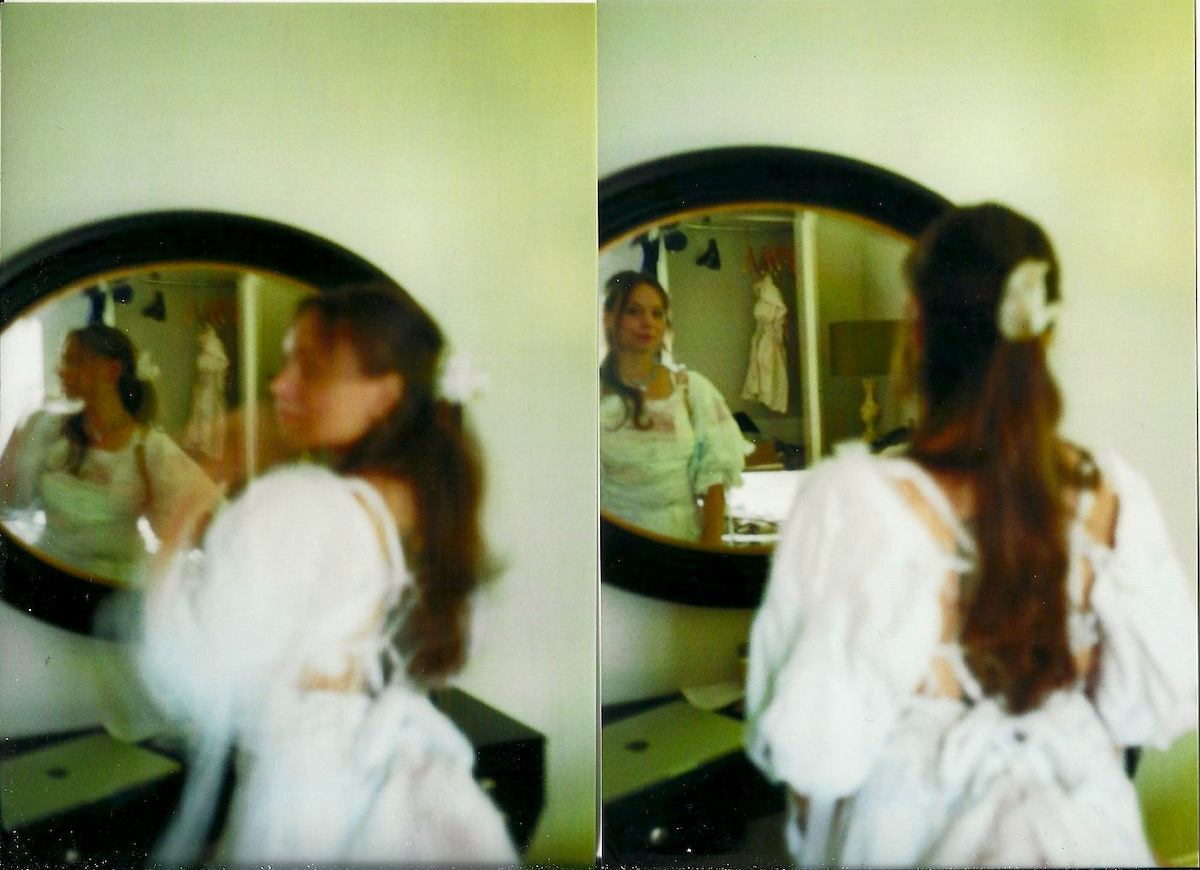In 1695, England’s first Poet Laureate John Dryden described painting and poetry as “sister arts”: two modes of expression so deeply intertwined that it is impossible to prize them apart. In the work of Hannah Maria Schmutterer, sculpture and dressmaking join the sisterhood. Informed by her training as both a designer and a fine artist, Schmutterer’s practice softens the divisions between painting, poetry, sculpture and dressmaking, producing hybrid objects that defy categorisation.
Dresses once worn by friends, strangers and the artist herself undergo a process of flattening until they reammerge as configurations of textile and memory. Across a series of tapestry-like panels, swathes of lavender satin that were once somebody’s sleeve meet a fragment of a floral print, perhaps part of a hem that once brushed against the wearer’s knees. Broderie anglaise dyed a rich coral pink collides with playful blue gingham. Ribbons, seams, straps and ties become faultlines between worlds: mediators of the stories held by the clothes even as the bodies who wore them are rendered invisible.
It would be tempting to say that, for Schmutterer, dressmaking is a form of portraiture, and that flattening dresses into two-dimensional canvases creates imaginary group portraits of the figures who wore them. Yet portraiture is too static a term to describe the relationship between person and dress in her work. For Schmutterer, the spirit of the person leaves an indelible stain on the fabric of the dress. Marred by stains of the spirit, dresses evolve into vessels that contain both the dreams and the everyday experiences of the wearer. Burning desire, fleeting moments of joy or pain, anxiety and stress, pleasure and longing, time spent waiting and loving, speaking and listening: all of these sensations are fixed into the textile and harnessed once the dresses are unpicked and reassembled.
Her tapestries pulse with energy, with traces of life that cannot be consolidated into a single image of a body or face. Even as the wearer forgets the dreams and experiences, the dress preserves them.
The dress is now a shell that holds her own fairytale: a story that continues to unfold as the dress is mounted on the wall in an exhibition of her art.
Rather than specific stories from the annals of fairyland, Schmutterer is drawn to the abstract idea of what a fairytale is, and what it has the potential to be. She has found that “fairytale” is the most succinct and evocative way of describing the dreams and experiences that become part of the dresses she finds, makes and remakes. And, just like the ways in which the narratives of fairytales are altered as they are told and retold between languages and editions of anthologies, her dresses are continually reconstructed and repurposed, their spiritual essences enduring in spite of changes to their form. The notion of the fairytale also speaks to the timeworn quality of her work. It is as if these tapestries have long been hidden and suddenly unearthed, the spiritual energies they contain unleashed on the viewer with emotional immediacy.
Despite their flattening and abstraction, the garments in Schmutterer’s works betray a clear debt to traditional Bavarian dresses. Originally from Nuremberg, the artist returned to the south of Germany two years ago after time spent living in London, Auckland and Berlin. A side-effect of this temporary homecoming has been the ability to see Bavarian culture with an unexpected sense of objectivity, even alienation. This crystallized in the winter of 2021-22, when she was staying in Inning am Ammersee. Here, Schmutterer and her friends would walk around town wearing her creations. Despite their outlandish, experimental and unconventional elements, her dresses appeared utterly mundane in this context: instantly recognisable by the townspeople due to their affinity with Bavarian folk custom.
Yet, Schmutterer’s works–which are both mythological and biographical, abstract and figurative, bodily and spiritual–do not conform to any kind of tradition. In their refusal to be tied to a particular worldview, material, form or media, they expose the divisions between modes of craftsmanship to be entirely false. For a time, the dresses helped Schmutterer reassemble and remake her own sense of herself and where she belongs in the world. But she finds that this feeling of a stable selfhood is as fleeting as a dream before it is forgotten, or a stitch before it is ripped apart.
Words by Fauness

